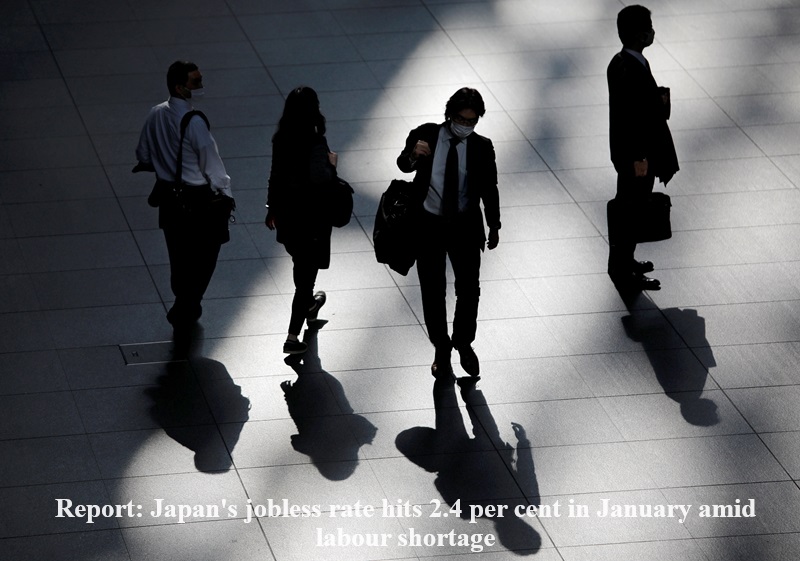
The most recent government data from Reuters indicates that Japan’s unemployment rate has seen a significant drop, falling to 2.4 percent in January from a revised 2.5 percent the previous month.
This notable positive change, which is the first in three months, is in line with what economists anticipated, as the seasonally adjusted unemployment rate met the median forecast in a Reuters poll.
The jobs-to-applicants ratio, a crucial measure of labor market health, remained constant at 1.27, matching the median forecast. This ratio suggests that there were 127 jobs available for every 100 job seekers, indicating a continued tightness in the labor market.
The stability of this ratio implies a balance between job demand and supply in the nation.
According to a report by the Mainichi, the Ministry of Internal Affairs and Communications reported a decrease of 30,000 employed individuals in January, bringing the total to a seasonally adjusted 67.61 million.
Simultaneously, the number of unemployed individuals decreased by 1.2 percent to 1.70 million.
It is noteworthy that 750,000 individuals voluntarily left their jobs, marking a 1.3 percent decrease, while 360,000 individuals were dismissed, indicating a 7.7 percent decline from the prior month.
The report cited Yuichi Kodama, chief economist at the Meiji Yasuda Research Institute, who attributed the improvement in the unemployment rate to a decrease in involuntary job losses, particularly those related to company bankruptcies or restructuring.
Despite this favorable trend, the labor market remains tight, with steady growth observed in face-to-face service sectors like entertainment.
The information and communication sector are also experiencing increased employment, driven by a recovery in the semiconductor industry.
Analyzing the breakdown of gender-specific unemployment data, there was an increase of 60,000 unemployed women in January, totaling 730,000.
This rise is attributed to more women leaving their jobs in search of better working conditions amidst the ongoing economic recovery.
In contrast, the number of unemployed men decreased by 90,000, totaling 960,000.
The job-to-applicant ratio remains unchanged, indicating labor shortages in various industries, including medical and welfare, while others such as construction and manufacturing struggle to offer job openings.
An analysis of specific sectors reveals a diverse landscape in job offers.
Lifestyle and entertainment services witnessed a 5.7 percent increase, and information and communications experienced a 4.5 percent climb.
However, the manufacturing sector saw an 11.6 percent decline in job offers, and the accommodation and food services industry recorded an 8.8 percent decrease.

Post Your Comments